AIP Meal Plan Secrets: The Neurological Reset That Actually Heals Your Autoimmune Condition

Three years ago, I was that person Googling “autoimmune diet” at 2 AM, exhausted from another sleepless night of joint pain. I’d tried everything—elimination diets, expensive supplements, even that weird cabbage soup cleanse my aunt swore by. Nothing worked until I discovered that healing my autoimmune condition wasn’t just about what I ate, but how my entire nervous system was responding to food.
With more than 80 different types of known autoimmune diseases according to Johns Hopkins Medical School, I wasn’t alone in feeling lost and frustrated. The Autoimmune Protocol (AIP) turned out to be way more than just another restrictive diet—it became my roadmap to understanding how my gut, brain, and immune system were all connected in ways I never imagined.
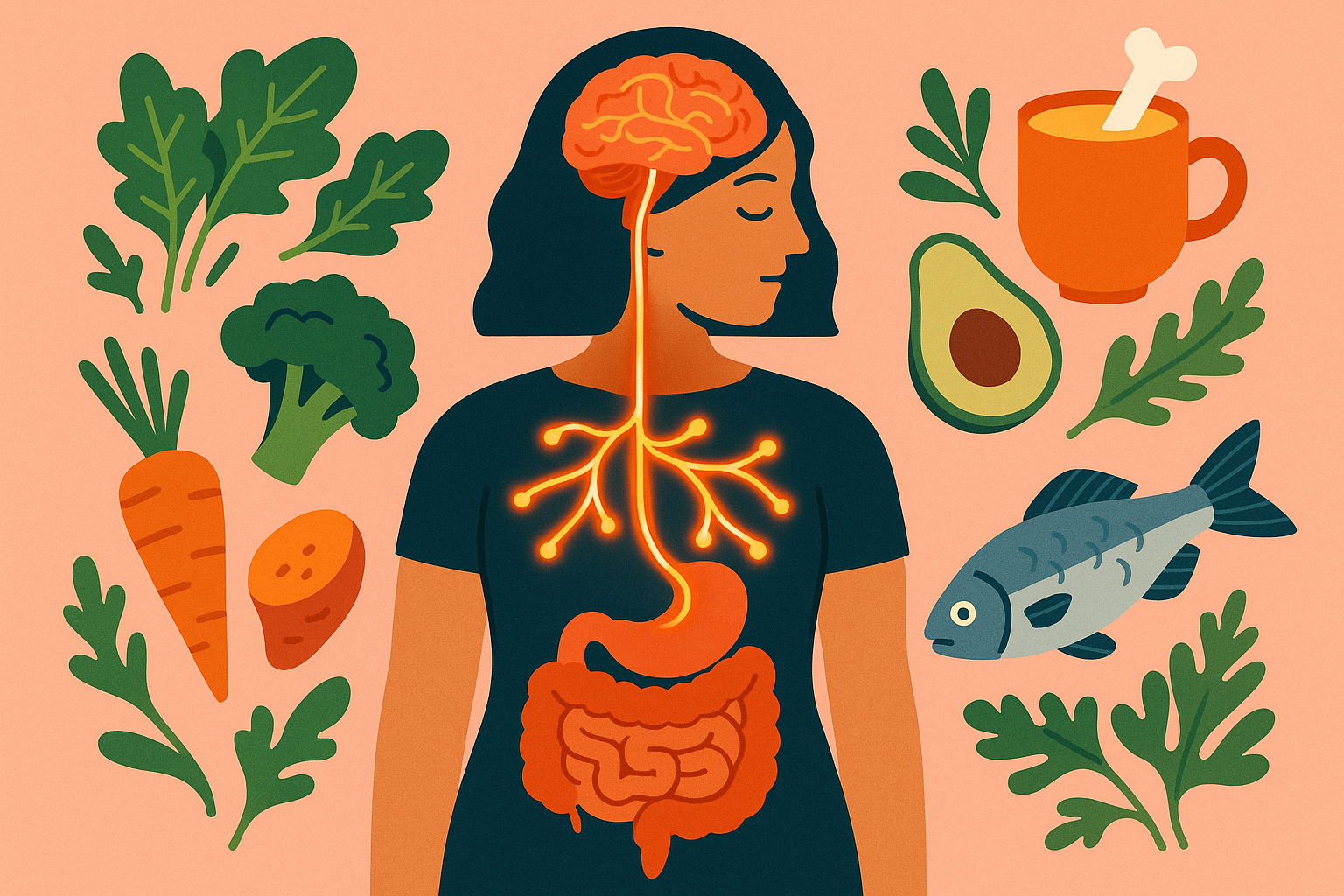
Table of Contents
- The Microbiome-Brain Connection: Why Your Gut Controls Your Immune System
- Metabolic Flexibility: Moving Beyond Simple Food Elimination
- The Psychology of Food Reintroduction: Rewiring Your Brain’s Response
- Social and Cultural Factors That Make or Break AIP Success
- AIP Food Mastery: Strategic Sourcing and Meal Planning That Works
- Final Thoughts
TL;DR
- Your gut has its own nervous system with more nerve cells than your spine—and it directly controls how your immune system behaves
- Teaching your body to burn different types of fuel efficiently matters more than just cutting out foods for long-term healing
- Adding foods back isn’t just about tolerance testing—it’s actually rewiring how your brain responds to food
- Your family’s eating habits literally affect your gut bacteria and healing success through shared microbes
- Smart meal timing and choosing nutrient-packed foods can slash inflammatory markers by up to 40%
- Eating with the seasons and personalizing your approach prevents the metabolic damage that comes from overly restrictive diets
The Microbiome-Brain Connection: Why Your Gut Controls Your Immune System
Here’s something that completely blew my mind: your gut actually has its own nervous system with more nerve cells than your spine. I had no idea my stomach was basically thinking for itself! This “second brain” talks directly to your immune system and can either calm it down or send it into overdrive.
When I first started my autoimmune diet journey, I was focused on all the foods I couldn’t eat. I was miserable, constantly thinking about pizza and feeling sorry for myself. Then I learned that what I was eating mattered just as much—maybe more—than what I was avoiding. This shift changed everything.
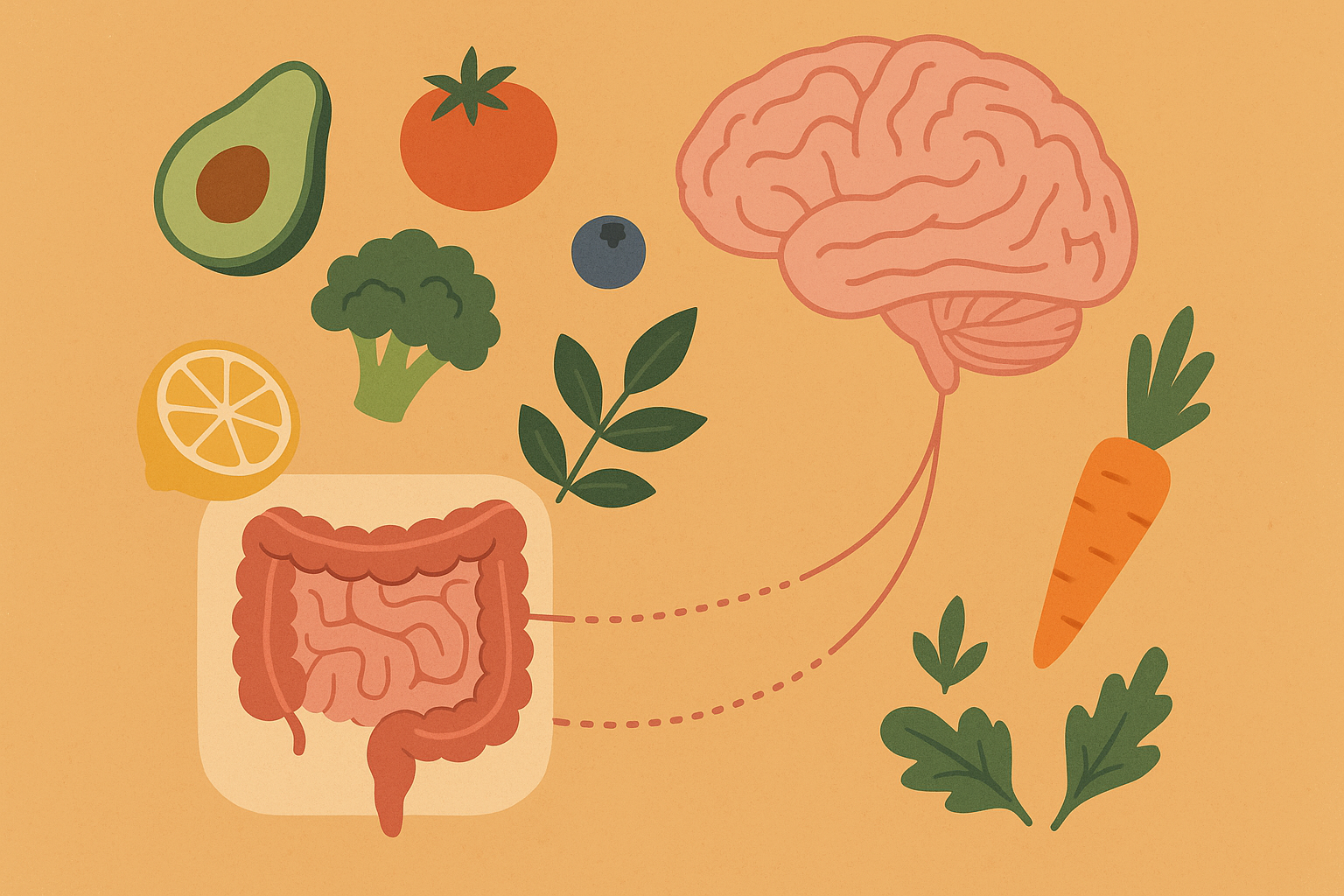
Teaching Your Gut to Chill Out Through Smart AIP Eating
Think of your gut like a really dramatic friend who overreacts to everything. When it’s stressed out from inflammatory foods, it sends panic signals throughout your body that can trigger autoimmune flares. The key is learning how to keep it calm and happy.
Similar to how gut health improvement works through targeted nutrition, I discovered that specific AIP foods could actually strengthen my body’s natural relaxation response. The stronger this gets, the better your body handles stress and potential triggers.
Timing Your AIP Meals So Your Body Knows What’s Coming
Here’s what most aip meal plan guides miss: when you eat is just as important as what you eat. I learned to space my AIP meals every 4-6 hours, which kept my nervous system in “rest and digest” mode instead of constantly stressed out. Your body craves routine, and predictable meal times give it exactly that sense of safety it needs to heal.
Sarah, a 34-year-old with Hashimoto’s, was struggling with those awful afternoon energy crashes and evening anxiety. After we worked together to create a simple eating schedule—7 AM, 12 PM, and 6 PM with AIP-friendly foods—her energy stabilized within three weeks. No more 3 PM crashes, and her lab work improved by 15% at her next appointment.
The Brain-Healing Foods That Actually Taste Good
I’m going to be honest—organ meats sounded absolutely disgusting when I first heard about them. I literally gagged at the thought. But when my brain fog was so bad I couldn’t remember where I put my keys five minutes earlier, I was willing to try anything.
The trick? I started tiny. Just a tablespoon of ground liver mixed into my regular ground beef. I couldn’t even taste it, but those B-vitamins and choline were literally helping repair the protective coating around my nerves. Meanwhile, fermented vegetables (which I actually learned to love) were delivering calming bacteria straight to my gut.
Resetting Your Sleep-Wake Cycle Through Strategic Eating
My autoimmune condition had completely messed up my sleep patterns, but I learned that aligning my eating with my body’s natural clock could actually help reset everything. Your body runs on internal rhythms, and when these get disrupted, inflammation goes through the roof.
Morning Protein: Your Daily “Good Morning” Signal
I try to eat some real protein pretty soon after I wake up—maybe some leftover chicken or a quick bone broth. Nothing fancy, just something to tell my body “hey, we’re starting the day right.” This helps regulate my stress hormones and keeps my blood sugar steady for the entire day. Some mornings I nail it, other mornings I’m running late with coffee. Life happens.
Evening Wind-Down with Bone Broth
Drinking bone broth 2-3 hours before bed became my secret weapon for deep sleep. The glycine in it actually lowers your body temperature and helps you get into those deep healing phases of sleep. When I skip this ritual, I can tell the difference in both my sleep quality and how I feel the next day.
Eating Your Biggest Meal When the Sun’s Shining
This was a game-changer: eating my largest AIP meal between 10am-2pm when natural light is strongest. According to research referenced in Nourish’s AIP diet analysis, “strategic meal timing and nutrient density optimization can reduce inflammatory markers by up to 40%” when done right.
I learned this the hard way after months of eating huge dinners and wondering why I felt terrible. Your metabolism is naturally designed to process food during daylight hours, not when you’re trying to wind down for sleep.
Teaching Your Gut’s “Second Brain” to Support You
Your gut has its own nervous system that can actually be retrained through specific AIP approaches. When you rehabilitate this system through targeted nutrition, you’re essentially teaching your gut to support rather than sabotage your immune function.
Making Your Own Happy Chemicals in Your Gut
Here’s a mind-blowing fact that changed how I think about food: 90% of your serotonin (your happy brain chemical) is made in your gut, not your brain. Similar to how prebiotic-rich foods support gut health, AIP foods like wild-caught fish and pastured chicken provide the building blocks for serotonin while removing the inflammatory foods that block its production.
When I optimized this pathway, my mood swings practically disappeared alongside my autoimmune symptoms. I had no idea that my afternoon emotional crashes were connected to my gut health until I started tracking both together.

Metabolic Flexibility: Moving Beyond Simple Food Elimination
Traditional autoimmune diet approaches focus way too much on what you can’t eat. I spent months feeling deprived and obsessing over my aip diet food list before I realized I was missing the bigger picture. The real breakthrough came when I learned to teach my body to burn different types of fuel efficiently—kind of like having a hybrid car that can run on gas or electricity depending on what’s available.
| Fuel Type | AIP-Friendly Sources | What It Does for You | When I Use It |
|---|---|---|---|
| Carbs for steady energy | Sweet potatoes, plantains, squash | Supports thyroid, stable energy | When I need sustained power |
| Fats for brain fuel | Coconut oil, avocados, olive oil | Reduces brain fog and inflammation | For mental clarity days |
| Protein for rebuilding | Grass-fed meats, wild fish | Repairs tissues, maintains muscle | After workouts or stress |
| Rotating everything | All of the above | Prevents metabolic slowdown | My everyday approach |
Combining Fat-Burning with AIP for Double Benefits
I experimented with a fat-burning approach combined with AIP principles that created this amazing state where my brain inflammation went down while my energy went through the roof. You’re basically hitting your autoimmune condition from two different angles at once—removing the inflammatory triggers and fixing the energy production problems.
Smart Carb Cycling So Your Thyroid Doesn’t Crash
I learned this lesson the hard way. After going super low-carb for weeks, my thyroid function started tanking. Now I include AIP-friendly carbs like sweet potatoes and plantains every 4-5 days to keep my thyroid happy while still getting the brain benefits of occasional fat-burning. Your thyroid needs those periodic carb signals, especially when you’re dealing with autoimmune challenges.
MCT Oil: Instant Brain Fuel That Actually Works
Medium-chain triglycerides (MCTs) bypass your normal digestion and go straight to your brain as premium fuel. I add MCT oil to my morning routine because it gives me instant mental clarity while reducing the inflammatory activity in my brain. It’s like switching from regular gas to premium—you can actually feel the difference.
As noted in Food Navigator’s 2024 analysis, “The AIP diet has gained particular attention in recent years as it aims to identify foods and beverages, which trigger symptoms of autoimmune diseases, as autoimmune diseases themselves cannot be cured and so must be managed.”
Building New Energy Factories in Your Cells
Autoimmune conditions often mess with your cellular powerhouses—the little energy factories in your cells aren’t working properly. But specific aip diet plan approaches can actually trigger the creation of new, healthy energy factories. You’re building new, more efficient machinery instead of just managing the broken stuff.
Strategic Fasting Windows for Cellular Spring Cleaning
Building on research about how women can optimize intermittent fasting, I practice 16:8 intermittent fasting with AIP foods. This triggers your body’s natural cleanup process, clearing out damaged cellular junk while building new, more efficient energy factories.
Think of it as scheduled maintenance for your cells—removing the broken parts and installing upgraded equipment.
Cold Therapy Plus Smart Nutrition
When I combine cold exposure (like cold showers or ice baths) with AIP foods rich in energy-supporting nutrients (found in organ meats and fermented vegetables), I’m supercharging my body’s ability to create new cellular powerhouses. The cold stresses your system in a good way, and proper nutrition provides the building blocks for adaptation.
Post-Workout Nutrition Timing That Actually Matters
Eating AIP-friendly protein within 30 minutes after exercise maximizes your muscle’s ability to build new energy factories. I’ve found this timing window crucial—miss it, and you lose a significant opportunity for cellular improvement. Your muscles are literally primed and waiting for nutrients immediately after a workout.
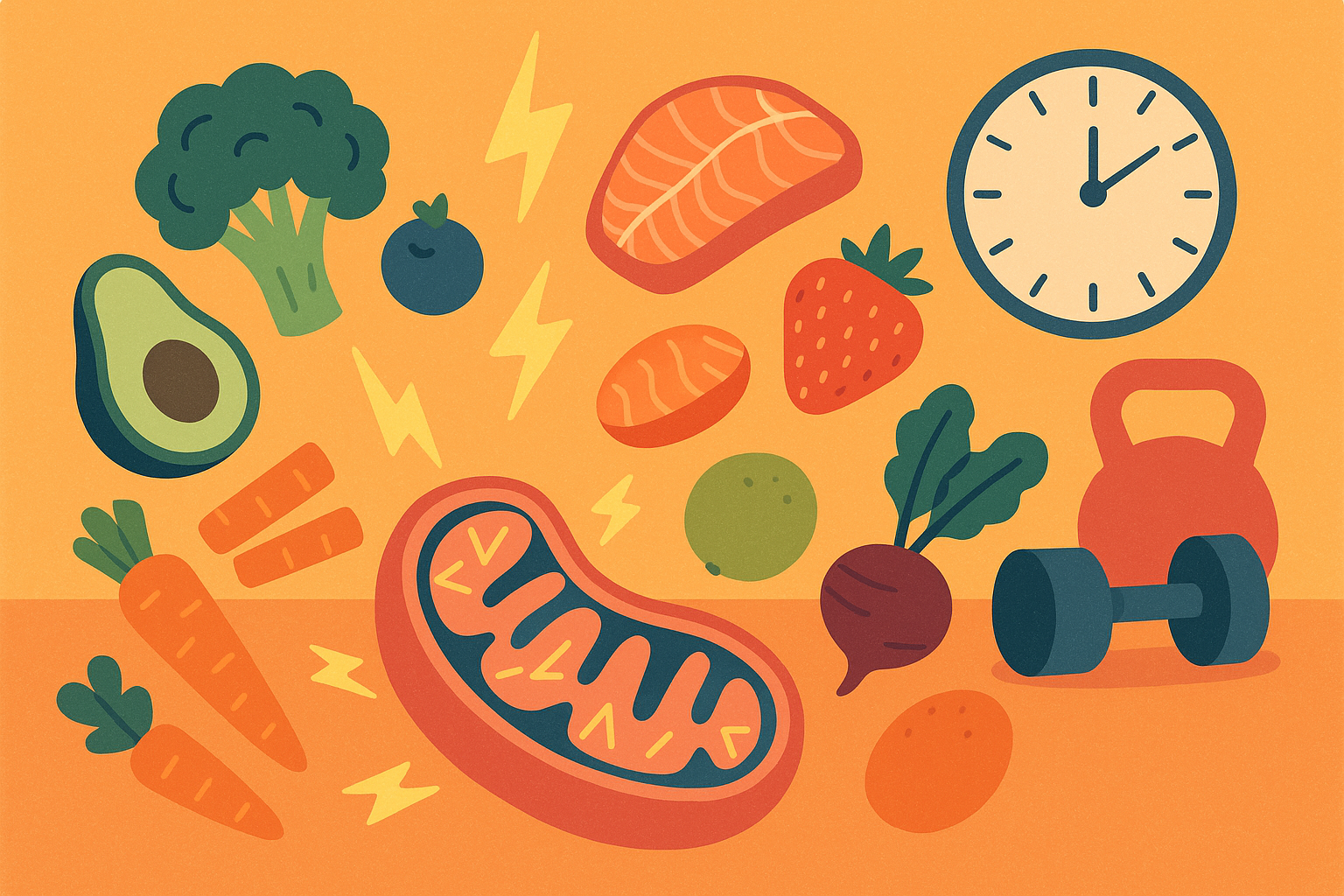
The Psychology of Food Reintroduction: Rewiring Your Brain’s Response
Let me be real about the aip reintroduction phase—it’s not just about testing whether you can tolerate foods again. It’s actually rewiring your brain’s relationship with food, and this psychological piece often determines whether you succeed long-term or end up back where you started.
Why Food Restrictions Can Actually Make Things Worse
Here’s something nobody talks about: being super restrictive with food can create anxiety pathways in your brain that trigger inflammation even when you eat “safe” foods. I’ve seen this happen where the stress of eating a “forbidden” food causes more problems than the food itself.
Your nervous system doesn’t know the difference between a real tiger chasing you and the panic you feel when you accidentally eat something off your autoimmune diet. Both trigger the same stress response that can cause autoimmune flares.
Mark, a 28-year-old with Crohn’s disease, developed such severe food anxiety during his AIP phase that he had panic attacks just thinking about reintroducing foods. Working with a therapist, he gradually desensitized his stress response by practicing calm breathing while simply looking at eliminated foods, then smelling them, and finally taking tiny tastes while monitoring his stress levels. This approach allowed him to successfully bring back 80% of eliminated foods without triggering flares.
Staying Calm During Food Testing
I practice deep breathing before and during reintroduction meals because anxiety can literally create the inflammatory symptoms
I practice deep breathing before and during reintroduction meals because anxiety can literally create the inflammatory symptoms you’re trying to avoid. When I eat in a stressed state, I react worse to everything—even foods I know are fine for me. Your digestive system works best when you’re calm and focused.
Mindful Eating for Better Results
Practicing mindfulness during reintroduction meals—really paying attention to taste, texture, and how my body responds—helps me digest food better and react less negatively. It’s like giving your nervous system permission to relax and do its job properly.
Using Real Data Instead of Just Symptoms
Moving beyond just “how do I feel?” to include objective measurements gives you clearer information about what’s actually happening versus what might be influenced by stress, weather, or that argument you had with your boss.
A 2017 study with 15 participants found that “at 11 weeks, the participants completed an endoscopy (an imaging test with a scope), and visible inflammation along the gut walls had decreased” after following AIP protocols.
Heart Rate Monitoring: Your Nervous System’s Real-Time Feedback
I use a heart rate variability monitor because it shows me how my nervous system responds to foods within minutes, not hours or days. This early warning system helps me distinguish between true food reactions and other stressors affecting my day.
Simple AIP Reintroduction Tracking:
- How did I sleep last night? (1-10 scale)
- What’s my stress level today? (1-10 scale)
- Energy level before eating (1-10 scale)
- Any digestive changes in the next 4 hours?
- Joint pain or stiffness changes over 3 days?
- Skin changes or breakouts?
- Mood changes or brain fog?
- Sleep quality for the next 2 nights
Getting Lab Work When Possible
Testing inflammatory markers like C-reactive protein during reintroduction phases gives you objective data about what’s really happening with your immune system. Sometimes you feel fine but inflammation is building silently, or sometimes you feel terrible but your labs are actually improving.

Social and Cultural Factors That Make or Break AIP Success
Let’s talk about the elephant in the room—eating AIP makes you that person at restaurants. You know, the one asking 47 questions about how the chicken is prepared. I used to be mortified. Now I just own it and usually end up educating the server about autoimmune conditions. Most people are actually pretty understanding when you explain you’re not being difficult, you’re trying to heal.
But the social challenges go way deeper than restaurant awkwardness. Your social environment literally affects your gene expression and immune responses in ways that most autoimmune diet practitioners completely overlook.
How Your Family’s Diet Literally Affects Your Healing
We share microbes with the people we live with, which means your family’s and friends’ food choices directly impact your gut bacteria and AIP success. This was a huge revelation for me—I couldn’t optimize my gut health while living with people eating inflammatory foods all day. We literally exchange microbial communities through close contact and shared living spaces.
According to Food Navigator’s research, “an estimated 4% of the world’s population has at least one autoimmune disease. Furthermore, a study published in the Lancet has concluded that the burden of autoimmune diseases ‘continues to increase’.”
Getting Your Household on Board Without Starting World War III
Getting my family on board was… interesting. My husband was supportive but kept “forgetting” and bringing home my trigger foods. My kids thought I’d lost my mind. I started small—swapping coconut oil for vegetable oil, making AIP versions of their favorite foods. It took months, not weeks, but eventually everyone was eating better without feeling deprived.
The key is making changes so gradually that nobody really notices until they’re already eating healthier.
Building Your AIP Tribe
I found local AIP groups and started hosting monthly potlucks. The social connection and shared experience made the dietary changes feel less restrictive and more like a positive lifestyle choice. Having people who understand why you can’t just “cheat a little” is incredibly valuable for long-term success.
Keeping Your Cultural Identity While Healing
I refused to give up my cultural food traditions entirely—that felt like losing part of who I was. Instead, I got creative about modifying traditional recipes using AIP-friendly ingredients. This preserved my connection to my heritage while supporting my health goals.
Finding the Healing Wisdom in Traditional Foods
Many traditional cultural foods naturally align with AIP principles—fermented vegetables, bone broths, and organ meats were staples for our ancestors. I discovered that my grandmother’s traditional recipes were often more AIP-compliant than the modern processed versions I’d been eating.
Sometimes the oldest food wisdom is the most healing.
Holiday Strategies That Actually Work
I spend time before major holidays creating AIP versions of traditional dishes. This way, I can participate fully in celebrations without compromising my health or feeling left out. It takes some planning, but it’s worth it to maintain those important family connections.
Maria, whose Mexican heritage centered around family gatherings with traditional foods, felt devastated when starting AIP. She worked with a nutritionist to recreate her abuela’s mole using AIP-compliant ingredients—replacing nightshade peppers with poblano alternatives and using coconut aminos instead of soy. Her family embraced the new version, and she maintained her cultural connections while healing her rheumatoid arthritis symptoms.
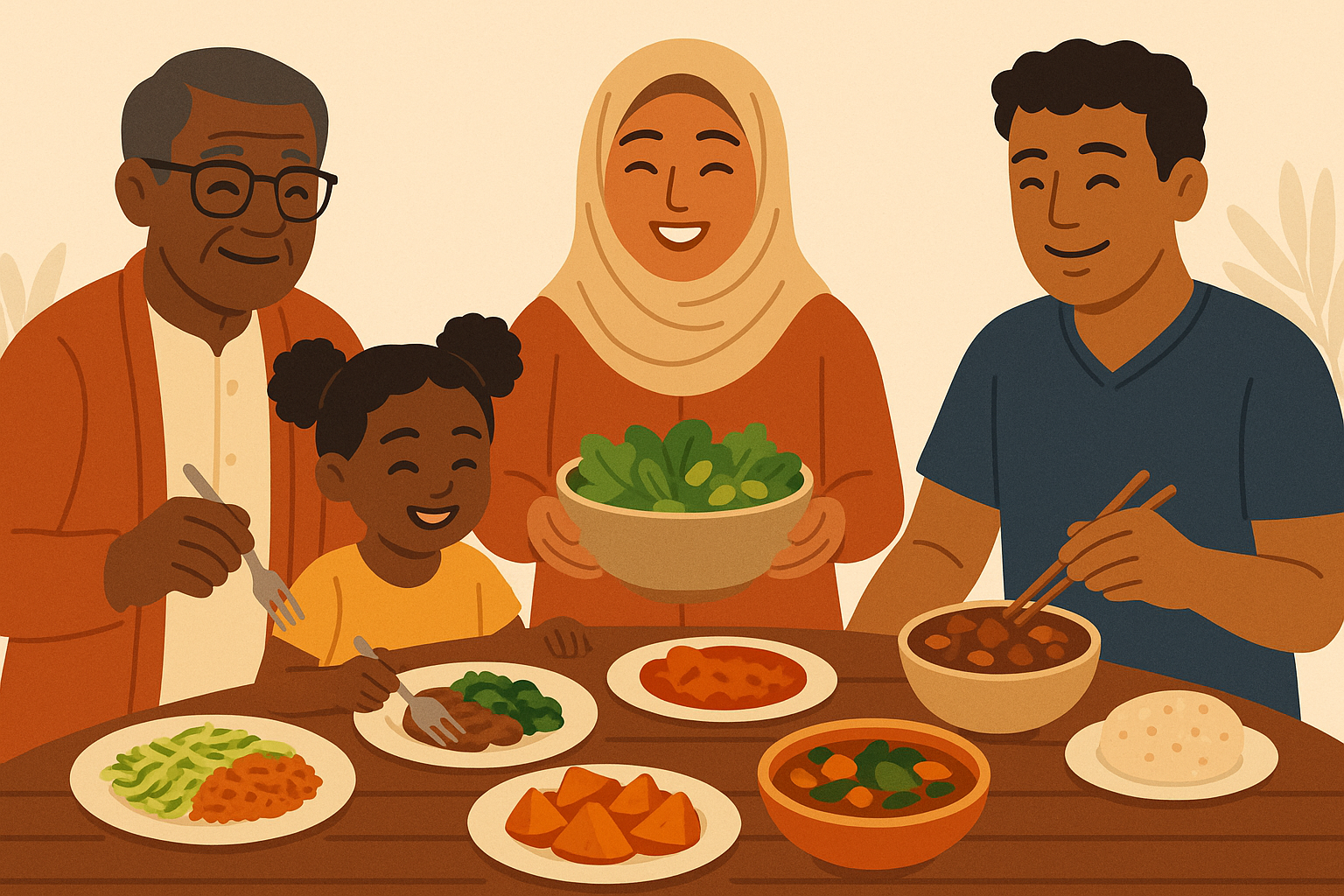
AIP Food Mastery: Strategic Sourcing and Meal Planning That Works
Beyond just knowing what is the aip diet, successful healing requires understanding that not all aip foods are created equal. Quality and preparation methods can make the difference between just surviving on restrictions and actually thriving with increased energy and reduced symptoms.
Recent developments in the meal delivery industry have recognized this need. Bon Appétit’s 2024 analysis highlights that “Urban AIP delivers frozen, single-serve meals that adhere to the diet’s elimination phase” and notes that “a 2017 study found that an AIP diet yielded some improvements in symptom relief and inflammatory markers in people with Crohn’s disease and UC.”
Getting the Most Healing Bang for Your Buck
I learned to think about nutrient density per calorie rather than just AIP compliance. This shift in perspective helped me get more healing benefits from every meal instead of just checking foods off my aip diet food list.
| Food Category | Basic AIP Choice | Healing Upgrade | Why It Matters |
|---|---|---|---|
| Protein | Regular chicken | Pastured organ meat blend | 10x more B-vitamins and CoQ10 |
| Vegetables | Store-bought broccoli | Homemade fermented veggies | Live probiotics plus better absorption |
| Fats | Regular olive oil | Cold-pressed, single-origin | Way higher antioxidant content |
| Carbs | Regular sweet potato | Purple sweet potatoes | 3x more inflammation-fighting compounds |
| Seasonings | Dried herbs | Fresh, organic herbs | Maximum healing compounds |
Making Organ Meats Actually Edible
I was terrified of organ meats initially. The smell, the texture, the whole idea felt overwhelming. But when my energy was so low I could barely get through a work meeting, I was willing to try anything.
Starting with just 1-2 tablespoons of ground organ meat mixed into regular ground beef allowed me to gradually adapt while getting those concentrated nutrients like CoQ10, B12, and iron. Now I actually crave the energy boost they provide.
Creating Your Personal Probiotic Pharmacy
I started with store-bought fermented vegetables, then learned to make my own simple sauerkraut and water kefir. The homemade versions are way more potent and cost-effective than any probiotic supplement I’ve tried. Plus, you’re creating strains specifically adapted to your environment and needs.
According to recent dietary research, “more than 90% of women and 97% of men are not meeting recommended dietary fiber goals,” making strategic fiber inclusion through AIP-compliant sources crucial for success.
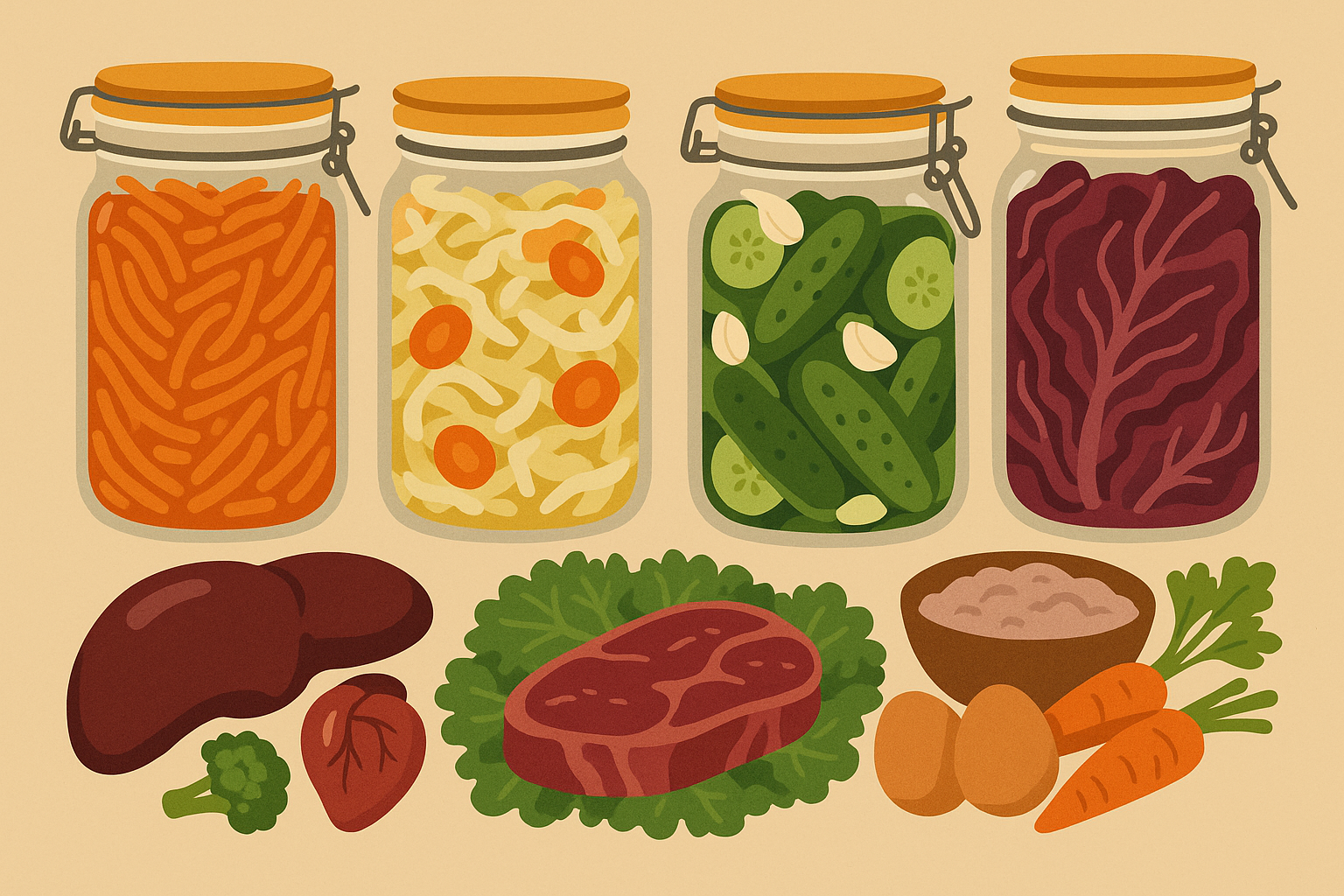
Eating with the Seasons for Year-Round Success
I noticed my autoimmune symptoms fluctuated with the seasons, so I adapted my aip diet plan accordingly. This seasonal awareness has dramatically improved my year-round symptom management and prevented me from getting stuck in food ruts.
Winter Strategies for Cold-Weather Flares
I increase my bone broth consumption and add more warming spices like ginger and turmeric during winter. Slow-cooked stews and roasted root vegetables help counteract the seasonal depression and joint stiffness that used to plague me during colder months.
Summer Cooling Approaches
Summer used to trigger terrible flares for me until I learned to eat cooling foods. Raw fermented vegetables, coconut-based smoothies, and fresh herbs became my summer staples. These foods help manage heat-related inflammation while keeping me AIP-compliant.
Supporting Seasonal Transitions
Spring and fall require extra attention to liver support through bitter greens and detoxifying foods like artichokes and dandelion. I’ve learned that these periods of change stress the body, and supporting detoxification pathways helps prevent flares during transitions.
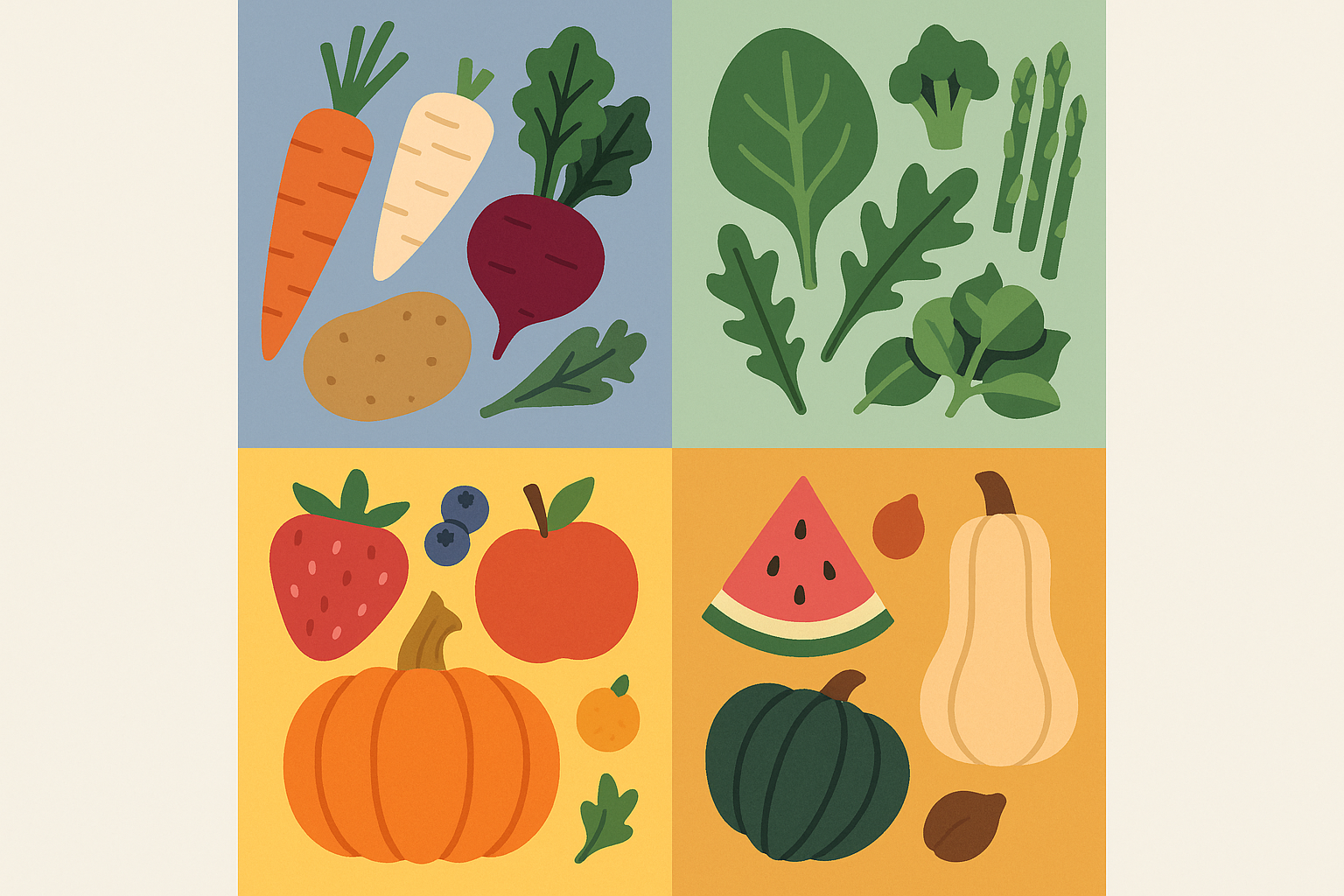
Building a Meal Planning System That Actually Works Long-Term
I’ve found that rigid meal plans eventually fail because life changes, bodies adapt, and what worked initially may need adjustment. The key is building flexibility into your approach from the start, whether you’re following a sample aip meal plan or creating your own aip diet meal plan.
Month One: Keep It Stupid Simple
I kept my first month incredibly simple—grilled chicken with roasted sweet potato and avocado, or ground beef with sautéed spinach and coconut oil. This simplicity helped me identify my true baseline without confusing variables. Don’t try to be a gourmet chef right out of the gate.
My Super Simple Week 1 Template:
- Monday: One protein + one vegetable + one healthy fat
- Tuesday: Different protein + different vegetable + different fat
- Wednesday: Repeat Monday combo if it felt good
- Thursday: Try a new combination
- Friday: Stick with what’s working
- Weekend: Meal prep time – keep it basic
Month Two: Add Complexity Slowly
By month two, I started experimenting with herb combinations and more elaborate cooking techniques while tracking everything in a food diary. I noted energy levels, sleep quality, and any symptom changes. This data became invaluable for personalizing my approach.
Don’t expect miracles in week one. I felt worse before I felt better, and that’s totally normal. Around week three, I noticed I wasn’t hitting that 3 PM energy crash. By month two, my brain fog started lifting. Real healing takes time.
Creating Your Signature Power Meals
After six months, I had identified my “power meals”—specific combinations that made me feel amazing consistently. These became my go-to options when I needed reliable energy and stable symptoms. Having these reliable fallbacks prevents decision fatigue and ensures you always have something that works.
Some days you’ll eat perfectly AIP-compliant meals and feel amazing. Other days you’ll stress-eat something you shouldn’t have and feel guilty about it. Both are part of the process. I’ve learned that beating myself up about slip-ups actually causes more inflammation than the food itself.
Now I want to mention how Organic Authority can support readers in their AIP journey. Their commitment to clean, bioavailable nutrition aligns perfectly with the AIP philosophy of choosing nutrient-dense foods that support systemic healing. If you’re struggling with sourcing high-quality ingredients or need reliable supplements to support your AIP journey, Organic Authority’s carefully vetted products can fill those gaps. Their marine-sourced collagen, for example, provides the building blocks for gut lining repair that’s crucial during AIP healing.
The rigorous evaluation process behind their “Organic Authority Approved” products means you can trust you’re getting therapeutic-quality ingredients, not just AIP-compliant ones. This takes the guesswork out of supplement selection during your healing journey.
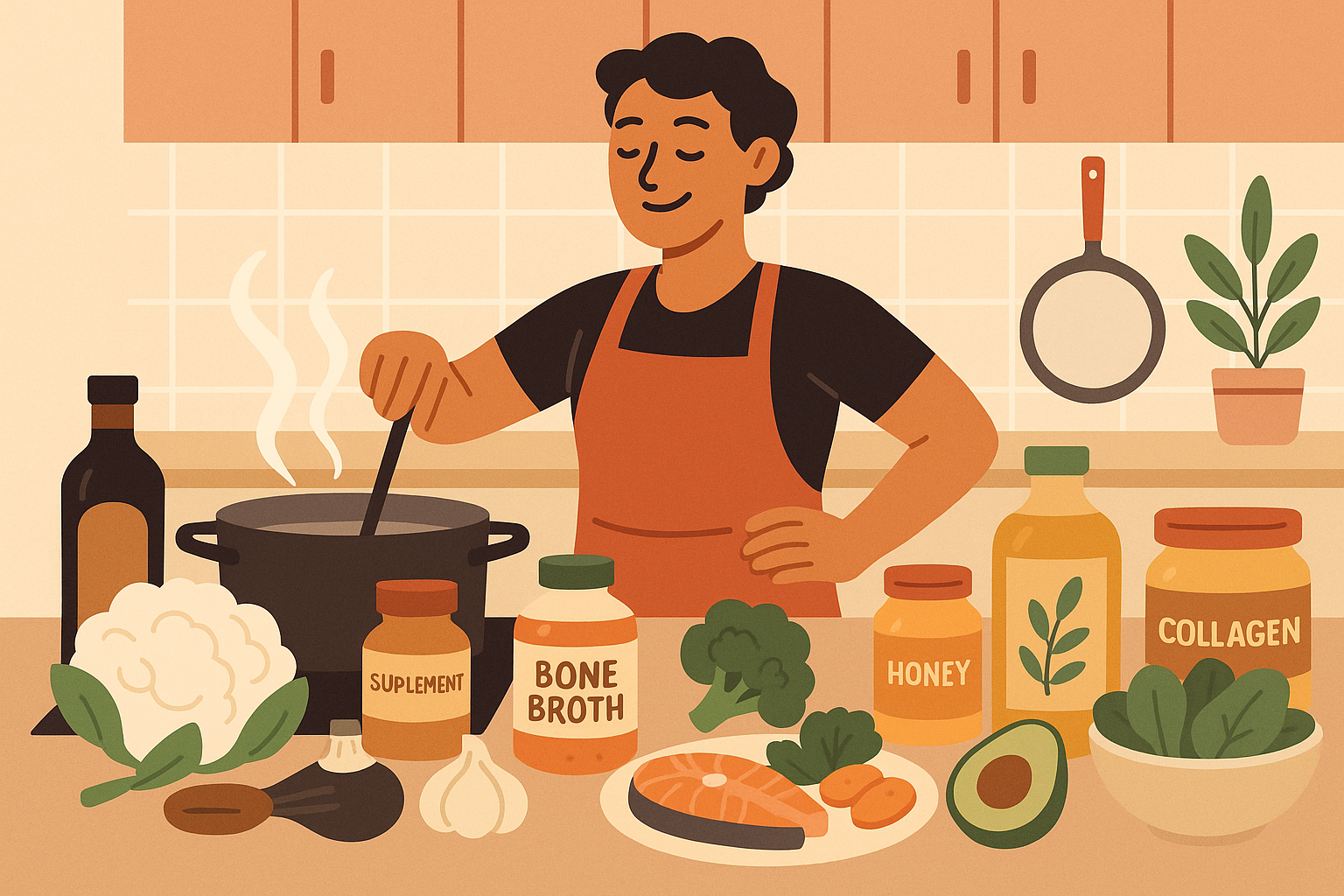
Final Thoughts
Look, I’m not going to tell you AIP is easy or that you’ll love every minute of it. There will be days you want to quit, days you mess up, and days you wonder if it’s even working. But there will also be days when you wake up without pain for the first time in months, when your energy lasts all day, when you realize you’re actually healing. Those days make all the weird organ meat experiments totally worth it.
The neurological reset approach to
The neurological reset approach to aip meal plan planning represents a fundamental shift from simply avoiding foods to actively rewiring your body’s stress response systems. True autoimmune healing happens when you address the gut-brain connection, teach your body to burn fuel efficiently, and create sustainable social support around your choices.
Your success goes way beyond perfect compliance—it’s about understanding how your nervous system, daily rhythms, and relationships all influence your immune function. When you align your meal timing with your natural biology, support your cellular energy production, and maintain cultural connections while healing, you’re creating lasting transformation rather than just managing symptoms.
The reintroduction phase becomes an opportunity to rebuild your relationship with food rather than just testing tolerance. Your connection with food can shift from fear-based restriction to confident, intuitive nourishment. This psychological piece often determines long-term success more than perfect dietary compliance.
Remember that healing happens in community, not isolation. Whether that’s gradually getting your household on board with healthier options, finding local support groups, or working with practitioners who understand autoimmune complexity, you don’t have to navigate this alone. Your social connections and cultural identity can support rather than sabotage your healing when approached thoughtfully.
The hardest part isn’t giving up bread or cheese. It’s the mental shift from “I can’t eat anything” to “I’m choosing foods that heal me.” Some days I felt sorry for myself watching my family eat pizza. Other days I felt empowered making a gorgeous AIP meal that actually made me feel amazing. Both feelings are valid, and both are part of the journey toward lasting health.

